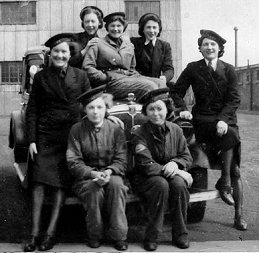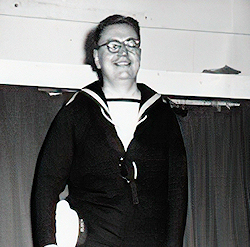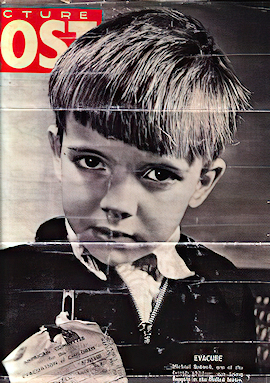


Peggy remembers her time at HMS Vernon (R) in Brighton attending the Seaman Torpedoman course starting in November 1942 and again in the spring of 1944 to undertake the Leading Torpedoman’s course.

Kathleen remembers her time in the RN working at HMS CAROLINE in Belfast servicing Hedgehog anti-submarine mortar launchers on convoy escort vessels while in port during WW2.

Barbara enlisted in the WRNS with no expectation of what role she would play in the war effort; imagine her surprise when she was allocated to a branch newly opened to women. She was to train as a Torpedoman and soon found herself working on depth charges and gyro compasses, sometimes even at sea.

Gordon remembers his time with Mobile Repair Unit No. 1 and Royal Naval Air Station Nowra, N.S.W., Australia during 1945.

In this work, originally written for the Fleet Air Arm Officer’s Association entitled ‘Three Years of Interest 1943 – 1946’ which is reproduced here by kind permission of the author, Gordon recalls how he came to be a part of the Salvage section of MONAB II

Michael remembers his time with the test flight of MONAB II at RHAS Bankstown, Sydney. He became the first RN pilot to fly the new Avenger Mk III when they arrived at Bankstown in June 1945.

Laurence joined MONAB II while it was forming up at R.N.A.E. Risley. When MONAB II closed at the end of March 1946 Laurence was drafted to MONAB VI at Schofields, also soon to close down. Laurence returned home to the UK on the same vessel which carried him out to Australia, the troop ship ATHLONE CASTLE. .

Douglas joined the RN in May 1943 and trained as an Air Fitter (Engines). He was drafted to MONAB II and served with the unit until its closure at the end of March 1946. Nearing the UK on passage to be demobbed he was shipwrecked when the SS GEORGETOWN VICTORY struck rocks off Ballyhornan, Northern Ireland.

Geoff remembers his time with Mobile Repair Unit No. 1 and Royal Naval Air Station Nowra, N.S.W., Australia during 1945

Cliff joined the RN in July 1943and after basic training at HMS ROYAL ARTHUR completed his specialist training at RN Wireless Telegraphy School Brighton. He was drafted to HMS ANDERSON in Ceylon sited at Narahenpita golf course, Colombo, the main British radio listening and cryptanalysis centre outside Britain.

Tony enlisted at the age of 16 years and 5 months old and went to train as a Boy Telegraphist at H.M.S. St. George, formerly the Cunningham’s Holiday Camp on the outskirts of Douglas on the Ilse of Man.

Dr Ken Hines recalls how his parents met while working in the X-Ray department, and how his mother went on to do work for some of the most senior members of the naval medical staff.

"My Part In the Great War" An account of his time with the Royal Naval Division fighting ashore as an infantryman during the First World War.

In "I Spy" Angus recalls his time as a national serviceman in the Royal Navy, his selection and training for specialisation in interception of Russian communications during the Cold War era.

Most people hear the word ‘evacuee’ and think of the mass movement of children from cities and the coast to the British countryside -John Bedwell recalls how he, and his brother, became two of the overseas evacuees who went to the US in 1940, returning home on HMS Thane in 1944.

Albert recalls hid time on the Aircraft Maintenance Carrier H.M.S. Pioneer, from joining her a t her builder’s yard to returning home to the UK one year later after a voyage to the Pacific to join the fight against the Japanese..
© 1999-2025 The Royal Navy Research Archive All Rights Reserved Terms of use Powered byW3.CSS